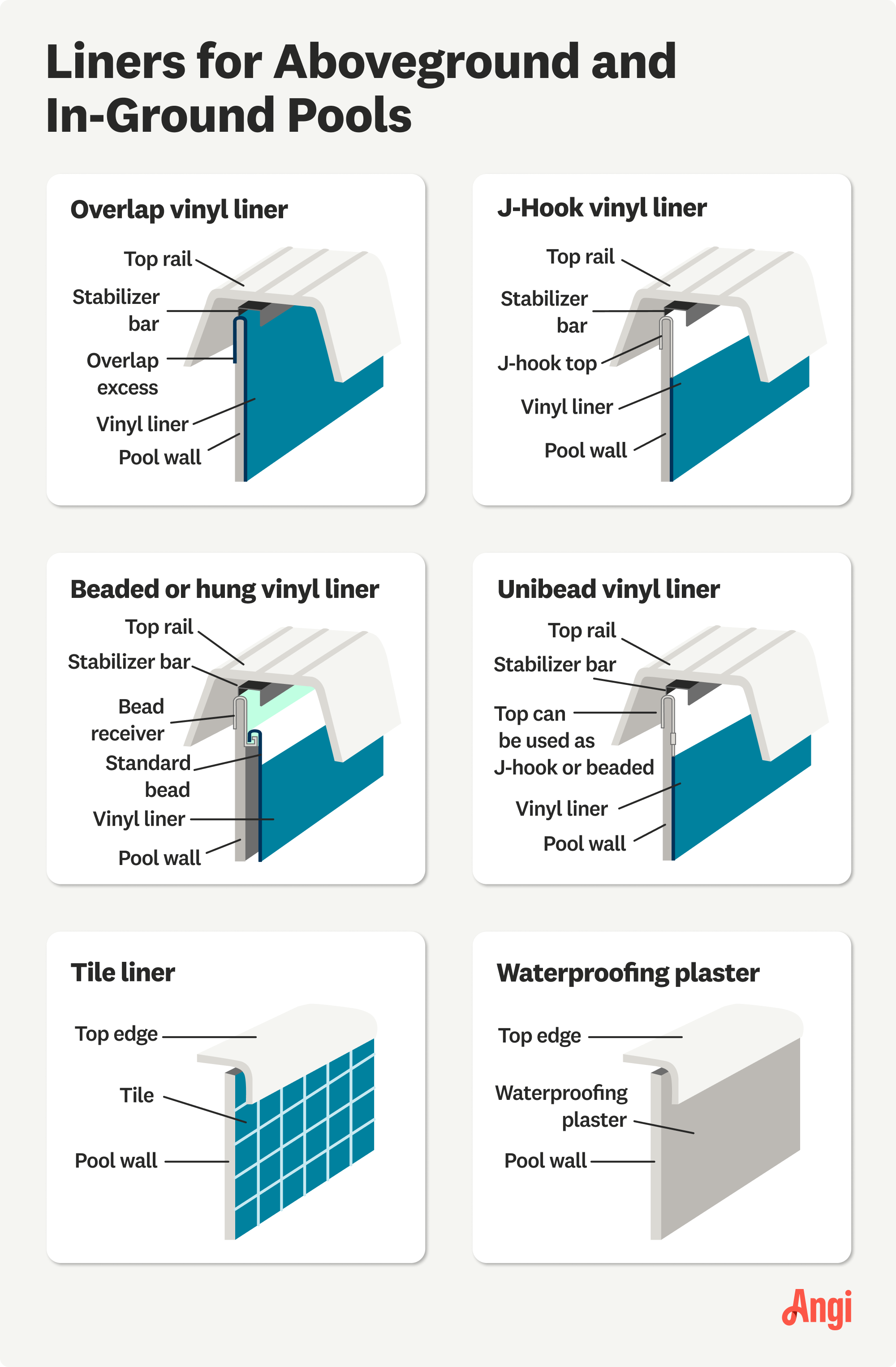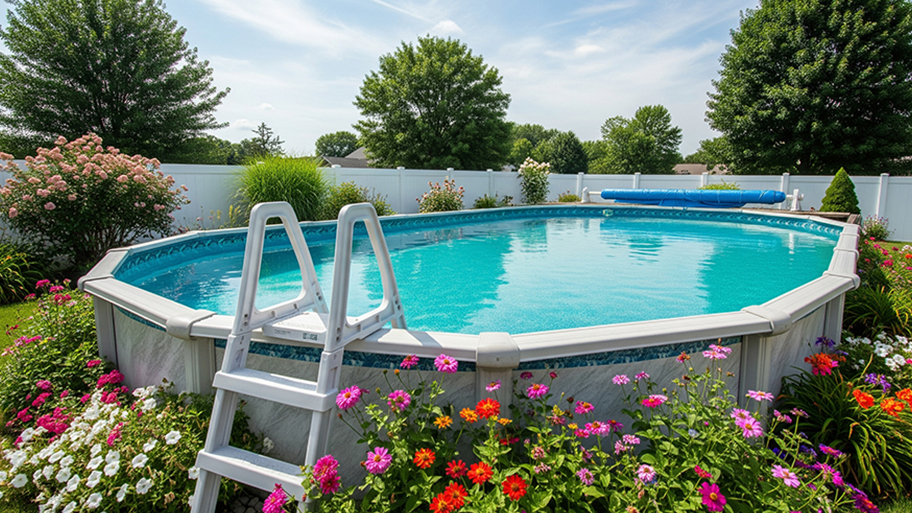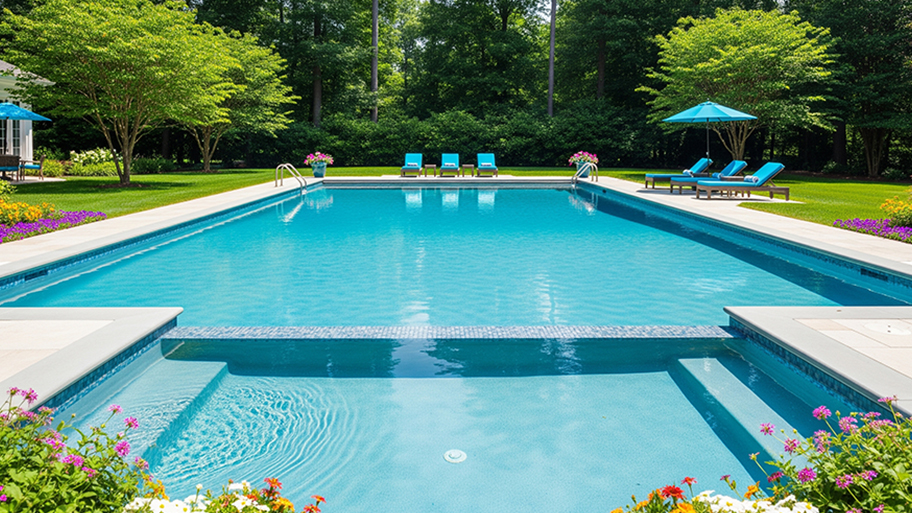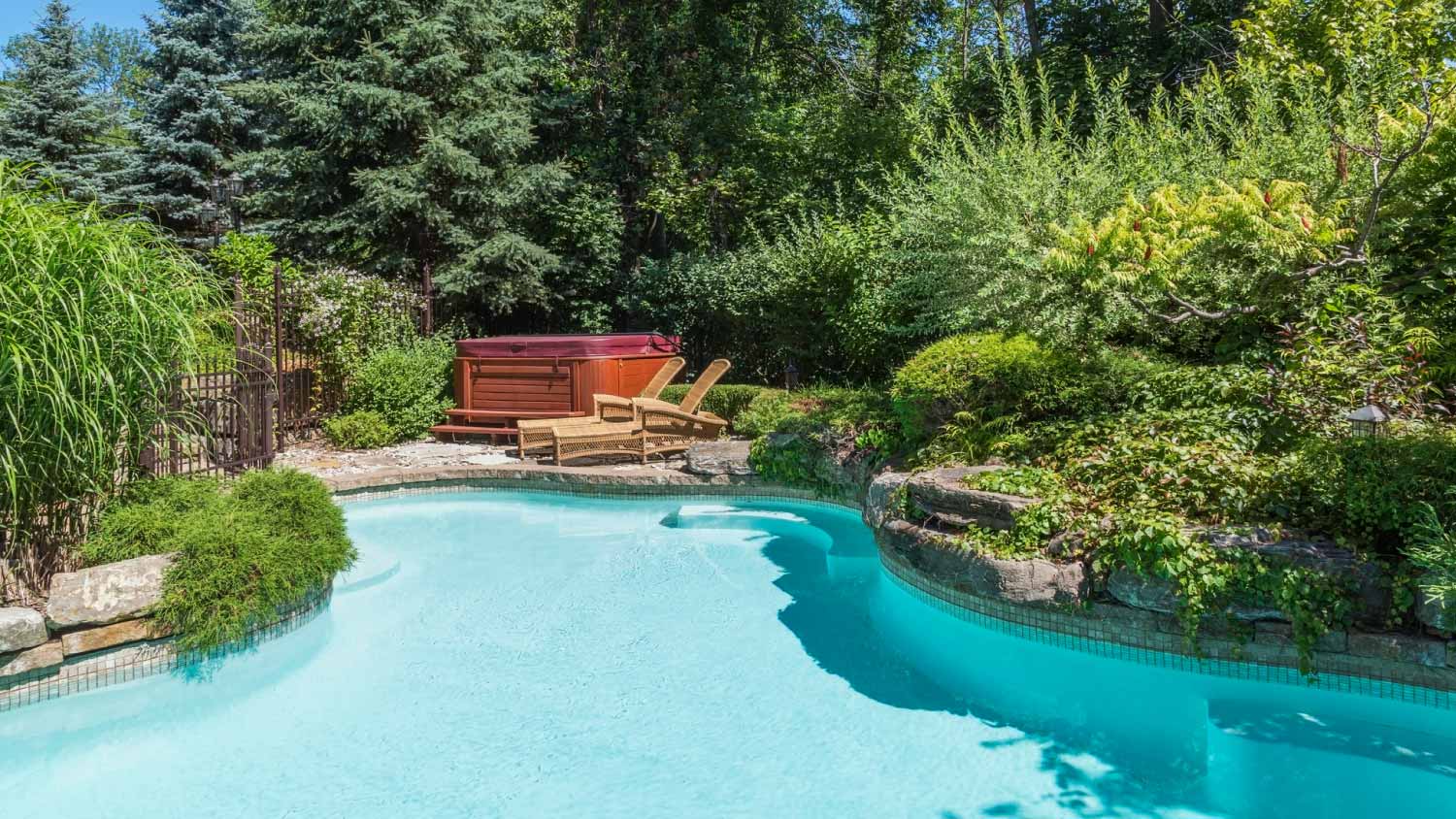
Many factors affect indoor pool costs. From different types and shapes to installation and maintenance, here’s what to consider when pricing out your project.
Pool liner replacement costs average $2,504, but prices fall between $1,242 and $3,871. A pool liner installer can check out your pool and break down the costs.


Pool liner replacement costs $5 per square foot on average.
Replacing the liner on an in-ground pool costs between $1,200 and $2,100 on average, while aboveground pool liners cost between $500 and $900.
Vinyl pool liners are the most popular, and they cost $300 to $4,000.
The cost of pool liner replacement is affected by liner type and thickness, pool shape and size, liner material, and more.
The average cost to replace a pool liner is $2,504, and most homeowners pay between $1,242 and $3,871. Some projects cost as much as $5,930 or as little as $352, depending on the type and size of the pool, liner type, and other factors.
Pool liners are essential for maintaining water in your pool, preventing leaks, protecting pools from interior damage, and keeping mold and algae at bay—all while enhancing the visual appearance of your pool.
To help homeowners with their next project, Angi provides readers with the most accurate cost data and upholds strict editorial standards. We’ve surveyed thousands of real Angi customers about their project costs to develop the pricing data you see, so you can make the best decisions for you and your home. We pair this data with research from reputable sources, including the U.S. Bureau of Labor Statistics, academic journals, market studies, and interviews with industry experts—all to ensure our prices reflect real-world projects.
In-ground pool liner replacement is almost always more expensive than replacing a liner for an aboveground pool:
Aboveground pool liners: $500–$900
In-ground pool liners: $1,200–$2,100
In-ground pool liners require more labor to access, remove, and replace. They also tend to have steps that make liner replacement more challenging, which leads to the higher price tag.
The type of pool liner affects its price, with options ranging from as little as $200 to as much as $1,000. There are three types of liners: overlap, beaded, and uni-bead liners. Here are the average cost ranges for each of them:
Beaded liner: $500–$1,000
Overlap liner: $200–$600
Uni-bead liner: $400–$900

The average cost of pool liner replacement is $5 per square foot, meaning that prices rise for larger pools. What’s more, liner replacement in L-shaped or kidney-shaped pools is more expensive than standard rectangular or oval pools. Custom pool shapes and depths also require custom liners, which are more expensive than prefabricated options.
Here’s the average cost of pool liner replacement based on pool size:
| Pool Size (Feet) | Average Cost to Replace Liner |
|---|---|
| 6x8 | $240 |
| 8x12 | $480 |
| 8x20 | $800 |
| 10x8 | $400 |
| 12x20 | $1,200 |
| 16x32 | $2,560 |
| 18x36 | $3,240 |
| 20x40 | $4,000 |
Labor costs for installing an aboveground pool liner range from $250 to $800, while in-ground pool liner installation costs between $1,000 and $2,500. You may have to pay more if you have a custom-shaped pool, custom steps, or other non-standard shapes and depths.
When you hire a pro to replace your pool liner, they will:
Drain the pool
Remove the old liner
Measure and order a new liner
Install the new liner
Refill and clean up the pool
Other factors can affect pool liner replacement costs, including material, liner thickness, and more. Here’s what you can expect:
Liner material: $300–$4,000 for vinyl, $500–$1,000 for waterproofing plaster, $1,000–$8,000 for fiberglass, $2,000–$70,000 for tile
Liner thickness: $300–$500 more expensive for thicker liners
Draining a pool: $500–$700
Filling a pool with water: $90–$270
Permits: $150–$300, if required
Disposal of the old liner: $75–$150
Pool liner replacement is more expensive than repairs:
Pool liner repair costs: $100–$500 (though the price might extend to $2,500, depending on the damage)
Average cost to replace a pool liner: $2,504
Here’s when you might repair a pool liner:
The liner is relatively new (under 5–7 years old).
You have small tears or punctures (less than 2–3 inches long), and they’re not close to seams, corners, or the filtration system.
Minor wrinkles aren’t affecting the structure or causing leaks.
Sun damage is cosmetic and limited to areas near the waterline.
You have slow, localized leaks that can be patched.
There are small areas of floor damage that haven’t affected the liner’s integrity.
The liner’s bead is slipping out of the track.
It’s in good condition otherwise.
You should replace the pool liner in the following situations:
The liner is over 8 to 12 years old.
The liner has a major tear, especially if it’s close to the filtration system, corners, or seams.
Sun exposure has caused the vinyl to become dry, brittle, or cracked.
Your pool liner has major wrinkles and bulges.
It’s pulling away from the corners, walls, or track.
There are multiple patches, suggesting the liner is deteriorating.
The bead won’t stay in the track, even with a liner lock.
There's floor damage underneath (like washed-out sand, vermiculite collapse, or ground movement).
The liner has extensive staining, mold, or algae growth.
You're doing a major pool renovation.
If you choose to repair the liner, you can attempt some jobs yourself. Otherwise, hire a local pool repair service to do it for you; they can also advise on whether a replacement is needed instead.
You’ll pay around $30 to $50 per hour in labor costs for pool liner replacement, so you’d save on those fees if you DIY. You’ll still have to pay for the liner itself, as well as the cost of draining and refilling the pool, which will total about $300 to $1,000.
That said, it's always recommended to hire a pro. Here’s why:
Installing a new liner can be a challenging task.
The liner should be custom-manufactured to fit the exact shape and slope of your pool floor.
An improperly installed pool liner can wrinkle, become damaged along the bead tracks, or even rip.
You may void your pool liner warranty if you attempt to install it yourself, as some companies won’t honor the warranty unless a professional is responsible for the installation.
You might consider a DIY job if you have experience installing pool liners, but a pool liner installation company near you has the expertise to ensure your liner fits your pool correctly and lasts for years to come.
Here are a few ways you can save money when replacing your pool liner:
Avoid upgraded features: That stunning pattern or rich color you've been eyeing will inevitably cost more than a plain, traditional liner. Stick with a simple design to reduce costs by $300 to $700.
Replace during the slow season: While everyone else may jump to replace their liners in spring and early summer, you might get a 5% to 20% discount if you wait until the end of summer or fall to have a pool company replace your pool liner due to lower demand.
Maintain your pool: Routine pool maintenance ensures that your pool’s liner lasts as long as possible, ultimately saving you money on unnecessary replacements and repairs, which can cost $300 to $1,000+.
Choose a high-quality pool liner: Though it might seem counterintuitive, a high-quality liner gives you more bang for your buck by lowering how frequently you need to replace or repair it.
Clean your pool regularly: To protect your pool and liner from deterioration, clean your pool filter at least once a month during the swimming season and a few times during the offseason. This will remove algae, debris, dirt, sunscreen, and lotion residue from your pool.
Repair over replace, if possible: Contact a pool professional to determine if your liner can be repaired rather than replaced. You’ll pay an average of $300 for a repair, while a full replacement averages $2,504.
While labor will set you back $30 to $50 per hour, it’s necessary to hire a pool contractor for liner replacement.
The liner should be custom-manufactured to fit your pool, and an improperly installed pool liner might not work properly.
Repairs can be more cost-effective, averaging $300, but they only work for minor damage.
You can save by choosing a simple liner, replacing it during the off-season, and maintaining your pool properly.
From average costs to expert advice, get all the answers you need to get your job done.

Many factors affect indoor pool costs. From different types and shapes to installation and maintenance, here’s what to consider when pricing out your project.

Pool covers are a great way to maintain safety, reduce cleaning, and even bring down utility bills. Learn how much a pool cover costs in this price guide.

Dreaming of summertime swimming? Find out aboveground pool costs, including prices for materials, fun extras, and professional installation.

Baking soda is a budget-friendly way to tackle DIY pool maintenance. Our guide explains how to add baking soda to a pool.

How much shock does my pool need? Here's how to calculate how much pool shock to add to your pool based on its overall water condition.

From soaks to aerobics to cold dips, having a plunge pool offers tons of benefits. Learn everything you need to know about DIY plunge pool ideas and tips.